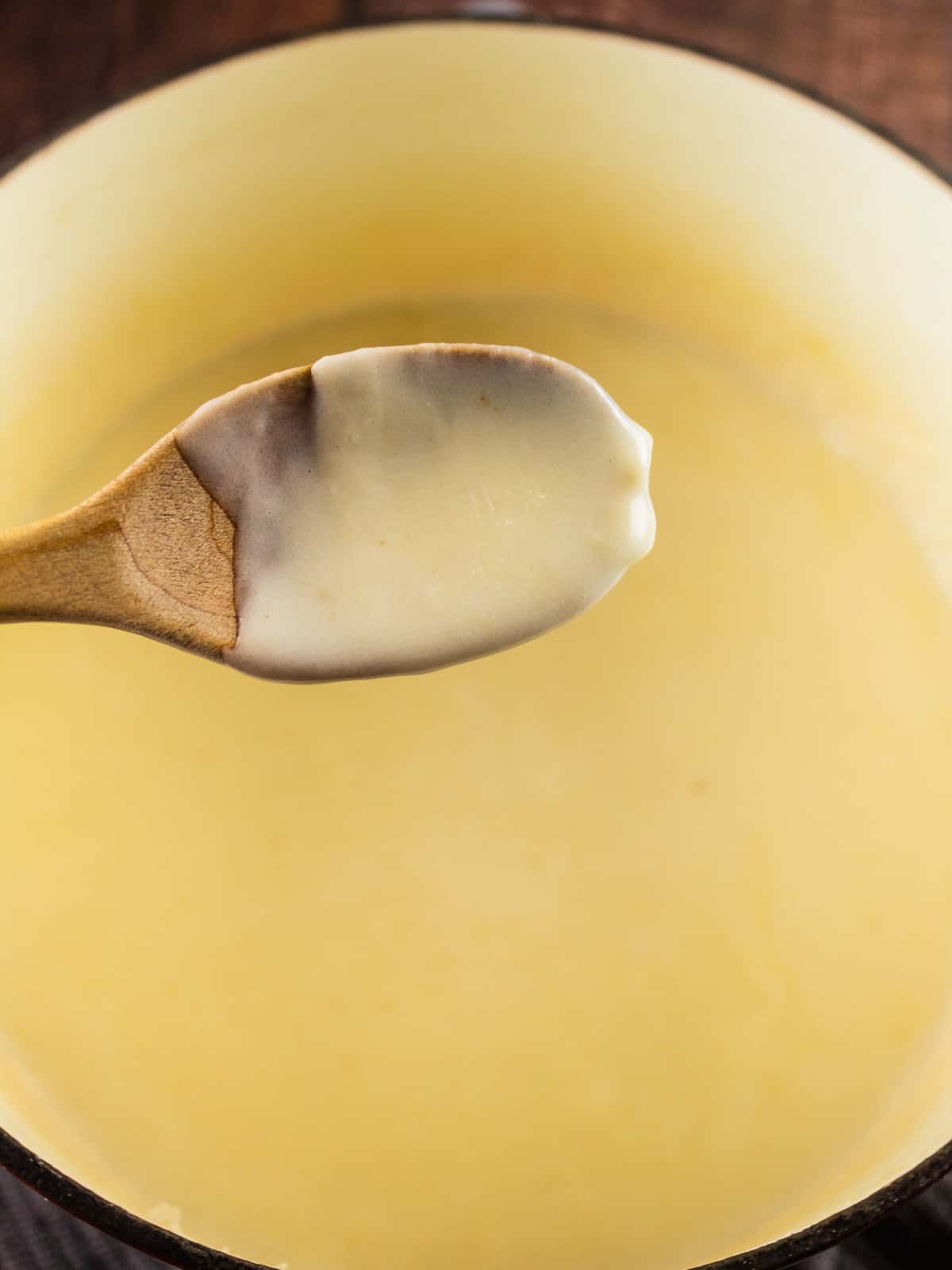Learn how to make sauces from scratch so you can easily create the perfect finish to all of your delicious meals. Read these top tips for creating the best from scratch sauces right in your very own kitchen.

When you are learning to cook from scratch, making a good sauce is an important skill to have. A homemade flavorful sauce can take an ordinary dish to the next level.
Making sauces from scratch can be done with simple ingredients and they don't have to take a lot of time.
The 5 Mother Sauces
In French cuisine, there are 5 mother sauces that are said to be the building blocks to creating a variety of sauces for your dishes. These sauces were developed in the 19th century by a French chef named, Auguste Escoffier.

- Béchamel - A béchamel sauce is a creamy white sauce made from butter, flour and milk. The flour and butter are formed to make a roux to thicken this creamy sauce. Cheese or heavy cream can be added along with spices to make a cheese sauce for macaroni or cream sauce for a steak.
- Veloute - This basic white sauce is made with a roux, just like a bechamel. However, instead of milk being added, a clear stock is added. It's a bit lighter than the bechamel and things like herbs, spices or aromatics can be added to make a variety of savory sauces such as a light gravy or fish sauce.
- Espagnole - A basic brown sauce or gravy made with browned roux and stock. It's darker in color due to the roux being cooked longer and has the additional tomato paste added to it. It's similar to a veloute and herbs or wine may be added to create a rich and complex darker sauce such as a gravy or mushroom sauce.
- Hollandaise - This rich sauce made with egg yolks that have been mixed with clarified butter by way of emulsion. It's a popular sauce served over eggs or vegetables and can be flavored a variety of different ways.
- Classic Tomato - A tomato based sauce made from fresh tomatoes or canned, that traditionally was made with a roux. Nowadays, it can be done with or without a roux because the tomatoes will thicken the sauce on its own. Different herbs and vegetables can be added to this sauce to create anything from pizza sauce to a complex creole sauce.
What is a roux?
A roux is simply a mixture of equal parts flour and fat that are cooked together to form a paste. This paste is then used to thicken both sauces and soups.
A roux can be cooked for a short time or for a longer time to develop additional flavor. Each stage the roux is cooked to will create a different flavor profile and color for your sauce.

What is an emulsion?
An emulsion is a mixture of two liquids that don't normally mix together, such as oil and water. When these two liquids are mixed together quickly, the droplets are distributed evenly throughout to create a cohesive sauce.
Examples of an emulsion would be a vinaigrette salad dressing, hollandaise sauce or mayonnaise.
How to deglaze a pan
A dirty pan is your best friend! After cooking meat or vegetables in a pan, there may be some stuck on bits. Those little bits contain concentrated flavor from whatever you were cooking from before.
Deglazing the pan, or adding liquid to it, will help to release those bits and make a delicious pan sauce.
- First, take your hot pan with the stuck on bits and add aromatics to it with maybe a. little bit of olive oil. This can be minced garlic, sliced shallots or diced onions. You can also add dried herbs in this step as well.
- Next, add liquid to deglaze the pan. This can be wine, lemon juice, stock, tomato sauce or water. The liquid will bubble up and help release those stuck on bits. Make sure to help scrape them off with the use of a wooden spoon or spatula.
- Third, let the liquid reduce a little bit by allowing to simmer and evaporate. This will concentrate the flavors to create a delicious sauce.
- Lastly, finish off the sauce with the addition of butter, milk, cream or even just salt and pepper. Fresh herbs or squeeze of lemon can be a great finishing touch for sauces as well.
Don't overcomplicate things

The purpose of a sauce is to add both flavor and moisture. It doesn't have to be super complicated and can be comprised of a handful of ingredients.
To make easy sauces, start with a base, then add your liquid and finally finish it off with spices, herbs, dairy or acid. Make sure you taste as you go and adjust the seasonings along the way.
One of the easiest ways to add season your sauce is simply by adding salt and pepper.
Substitutions
When making a sauce from scratch, you may need to make substitutions based on the dish you are making it for or preference. Using broth instead of water will provide the same consistency to your sauce, but will add additional flavor.
Milk and cream can be used interchangeably but will create a different consistency. Heavy cream or half and half will provide a thicker, creamier sauce as opposed to using milk.
Pairing your sauces
When adding a sauce to a dish, it's important to pair them correctly so they complement each other. Here are my tips for pairing your food with the perfect sauce.

- Chicken - This protein is pretty versatile and can be paired with almost any sauce. If you making lighter dish, such as grilled chicken, pair it with a bbq sauce or lighter topping. A battered or fried chicken breast leans towards the comfort food arena and can be served with a cream based sauce.
- Fish - Fish is a delicate item and is best served with a lighter sauce. This can still be a creamy type sauce that is perhaps seasoned with lighter flavors such as citrus or herbs.
- Beef and Pork - Beef and pork are heartier proteins and can be paired with a simple butter sauce or creamy rich sauces. Things like red wine, black pepper, mushrooms or other earthy elements go great with this meat.
- Vegetables - Since vegetables tend to be something that is considered a lighter dish, typically a light sauce, such as butter and herbs or vinaigrettes go best. However, to make a richer, more indulgent dish, a creamy sauce such as a hollandaise or bernaise can be served with it.
- Seafood - Seafood is a lighter dish as well and is typically served with a light butter sauce or light creamy sauce. Herbs or citrus go really well seafood and don't be afraid of spicy here either!
- Pasta - Pasta is another very versatile ingredient. It can be paired with homemade tomato sauce, basil pesto or creamy alfredo sauce.
If you ever don't recognize a tool or skill that is mentioned, be sure to look it up in our Glossary of Cooking Terms and Definitions for more information.








JoeW
This a great primer. I wish I'd had something like this when I was starting out. (I am currently older than the dirt in your garden)
Amanda
haha thanks Joe, I'm glad you enjoy the article!